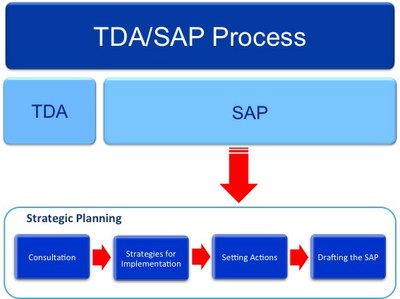4.8 - Strategic Planning
What is Strategic Planning?
Strategic planning is a process of defining strategy or direction, and making decisions on allocating resources to pursue this strategy. Drawing distinctions between realities and objectives is at the heart of strategic planning - there will always be various options for bridging the gap between the current situation and the desired objective.
Key Steps in the strategic planning process

This phase of SAP development focuses on 4 key strategic planning steps:
- Step 1: National and regional consultation processes - This step involves each country reviewing the outputs of the strategic thinking process - in particular the vision, goals and suggested options/alternatives - and conducting a thorough evaluation of the feasibility of the alternatives from a national perspective. In particular, the countries should examine how feasible the options/alternatives are from an economic, political and social perspective.
- Step 2: Setting strategies for implementation - This step involves direct engagement with the national development planning processes in order to ensure the SAP is fully integrated into national development plans and vice versa.
- Step 3: Action planning - Setting actions, timescales, priorities and indicators - This step involves action planning around actions, timescales, priorities and indicators. It is important that the SAP addresses not only the high-level initiatives and over-arching goals, but that they get articulated (translated) into short term actions that will be required to achieve the programme.
- Step 4: Drafting the SAP - The final step is the integration of the various outputs of the TDA/SAP process into a single, concise document with clear goals, quantifiable timescales and unambiguous assignment of responsibilities.

























